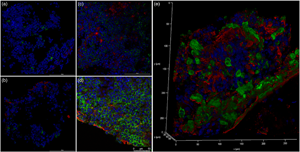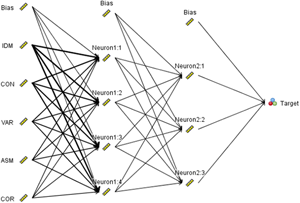Gray-level co-occurrence matrix (GLCM) analysis is a contemporary and innovative computational method for the assessment of textural patterns, applicable in almost any area of microscopy. The aim of our research was to perform the GLCM analysis of cell nuclei in Saccharomyces cerevisiae yeast cells after the induction of sublethal cell damage with ethyl alcohol, and to evaluate the performance of various machine learning (ML) models regarding their ability to separate damaged from intact cells. For each cell nucleus, five GLCM parameters were calculated: angular second moment, inverse difference moment, GLCM contrast, GLCM correlation, and textural variance. Based on the obtained GLCM data, we applied three ML approaches: neural network, random trees, and binomial logistic regression. Statistically significant differences in GLCM features were observed between treated and untreated cells. The multilayer perceptron neural network had the highest classification accuracy. The model also showed a relatively high level of sensitivity and specificity, as well as an excellent discriminatory power in the separation of treated from untreated cells. To the best of our knowledge, this is the first study to demonstrate that it is possible to create a relatively sensitive GLCM-based ML model for the detection of alcohol-induced damage in Saccharomyces cerevisiae cell nuclei.




